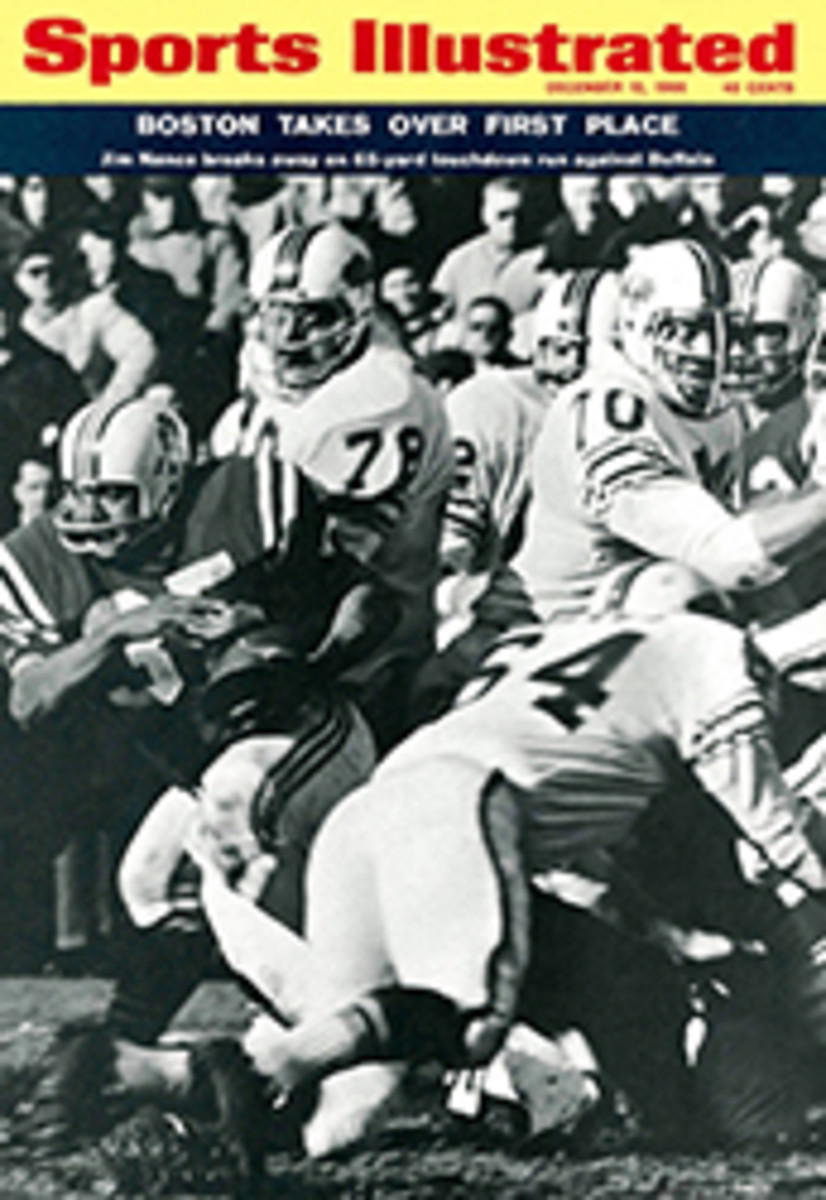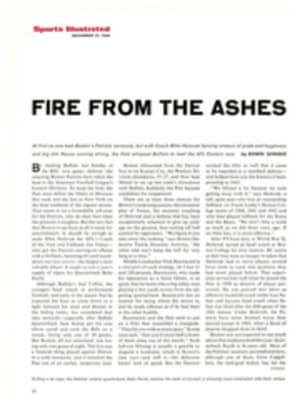
A Mighty Long Run from Cornwall to Oswego
The Cannonball of the O. & W. left Utica, N.Y. at midnight and, according to popular belief, reached Hamilton, 35 miles away, the following spring. Hamilton was the home of Madison College, which became Colgate University; the O. & W. was the New York, Ontario and Western Railway, which became only an abandoned right-of-way. Now outdoor enthusiasts want the state to take over the old roadbed and use it for a hiking, cycling and horseback-riding path across New York state.
But there were also 400 miles of trout streams, and Superintendent Childs of the O. & W. began planting trout in the rivers. And what rivers! The O. & W. crossed the Rondout, which John Burroughs said was one of the finest of all trout streams, and then ran along the headwaters of the Neversink, crossed Willowemoc Creek and ran along the Beaverkill, perhaps the most famous trout stream in the U. S. In the words of Theodore Gordon, father of American dry-fly fishing, "It would be hard to find anywhere a more beautiful one."
The O. & W. not only sought to stimulate fishing but also carried building material into the wilderness—for nothing—for anyone who would build a vacation cabin or a resort hotel along the tracks. It published each summer a guidebook along with its timetable, listing hotels, boardinghouses and farmers who would take summer guests. Each farm, it seems, was so situated that it enjoyed magnificent scenery, fresh air, pure water, cool nights and good fishing. Most provided delicious food in ample quantities, including home-grown vegetables, and many offered guests the use of porch swings and croquet grounds.
The 1880 O. & W. guide reported of James Gamble's farmhouse at Fallsburgh: "On the banks of the Neversink; rooms large and airy; beautiful falls and cañon." Or of Cornelius Ivory's farm, located in dense woods a mile from the station at Wurtsboro, which charged $6 a week, with room for 50 fishermen: "Best trout and pickerel fishing in Sullivan County."
Thaddeus Norris, the first American fly fisherman, fished the Willowemoc before 1865. John Burroughs, born near the village of Roxbury, not far from where the O. & W. ran, published such essays as The Heart of the Southern Catskills, marvelously engaging descriptive writing that summoned up the country's rocky wonders and its cold and turbulent rivers. Their impact was akin to that of Hemingway's fishing and hunting stories half a century later. Then Theodore Gordon made the land along the O. & W. known to discriminating anglers all over the world. Gordon settled on the Neversink in the 1880s and, for 20 years as a contributor to the English Fishing Gazette, communicated the pleasure he had found fishing in Catskill streams. The charm of Gordon's prose, the lack of any pretension and the sort of alert tranquillity that distinguished his descriptions of sport made the Beaverkill and its kindred streams unforgettable.
Such writers as these made the Catskills world famous. In the 1880 edition of the guidebook there were only 28 hotels listed, and most were small—but each year the list grew longer. The 1880 book ran to 45 pages. The 1881 edition, called Summer Homes on the New York, Ontario & Western Railway, was 82 pages long, while that for 1883 was 110 pages, and the 1900 volume came to 192 pages. Sometimes bound in hard covers and carrying colored illustrations, Summer Homes was given away for the asking.
The hotels grew increasingly elaborate. The town of Liberty, which had four small public houses in 1880, with room for 319 people, had 18 big hotels by 1909, which, along with boardinghouses, accommodated 1,782. The hotels tended to be massive, white, tree-shaded, overgrown dwellings, like the Hall House, where Theodore Gordon stayed. By 1909 there were 152 big hotels on only 83 miles of the O. & W. between Cornwall-on-Hudson and Roscoe. And many of the 199 boardinghouses and the 234 farmhouses had been expanded to hold guests and were really part-time hotels. There was now room for 14,490 visitors along the main line. The great era of the Catskill resort society had begun, the days of the Mount Meenahga House, and Chateau Shawgea and the Shawagunk Mountain House and Sha-wan-ga Lodge, and the Minnewaska Mountain House and the Waldo Hotel at Middleton, of which the 1909 edition of Summer Homes proudly noted: "House is under the personal management of the proprietor, David Moss, late manager of the House of Commons, London."
Did the O. & W.'s campaign to open up the wilderness really work? As far as vacationers were concerned, it worked exceedingly well. The towns along the way became linked in the great chain of Catskill resort towns, Ellenville, Monticello, Loch Sheldrake and the like, famous for the Nevele, the Raleigh, the Concord, Grossinger's and The Laurels, whose advertisements nowadays mention attractions far removed from the old garden swings on the farms—championship tennis courts and golf courses, for example, or sauna baths, indoor ice rinks, fencing instruction, ski runs, bob-sledding, low-caloric menus, health clubs and Eddie Fisher and other celebrities in the nightclubs. But the extent to which the O. & W. profited is obscured by many mysteries in its financial history. The railroad certainly made money at times. For years it hauled 150,000 vacationers each summer into the mountains. And in 1920 the vacation business became a bonanza: the O. & W. carried two million people that summer. Early in the Depression, in 1932, there were only 19 Class I railroads in the U.S. that were making money, and the O. & W. was one of them.
But its days were numbered. The line always wanted to be like other big railroads. It alternated between profiting from its apparently absurd policy of hauling vacationers into nowhere and losing money when it tried to be a practical railroad hauling freight. Expanding its coal-hauling business to Scranton meant that it had to buy heavier equipment and spend colossal sums strengthening the beautiful old bridges over the fine trout streams. At one time the O. & W. even tried to run high-speed luxury trains to Chicago, using the tracks of the Wabash. It went bankrupt in 1937, and finally out of business in 1957. By 1953, when the O. & W. stopped hauling passengers, the Interstate Commerce Commission valued it at $57,400,000, but the tax agent for the railroad estimated that the 541 miles of the O. & W. right-of-way were worth only $353,345.
Oh, the snow is six feet deep, in the good old wintertime.
When the Cannonball leaves Utica on the O. & W. line,
But when it reaches Hamilton, though strange as it may seem,
The frogs are croaking in the Lake and the Willow Path is green.
ILLUSTRATION
AN OLD ENGRAVING SHOWS A TYPICAL SCENE OF THE O. & W.'s ROUTE ALONG THE EAST BRANCH OF THE DELAWARE

